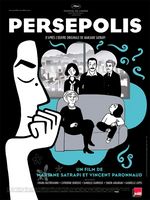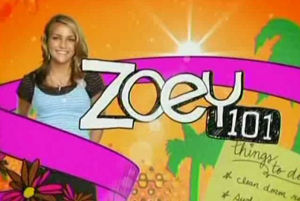 When the subject of Iran comes up, religious extremists tend to take center stage. However, co-directors/co-writers Marjane Satrapi and Vincent Paronnaud show that there is more to the Iranian culture with their animated feature “Persepolis” — in limited theatrical release on Dec. 25.
When the subject of Iran comes up, religious extremists tend to take center stage. However, co-directors/co-writers Marjane Satrapi and Vincent Paronnaud show that there is more to the Iranian culture with their animated feature “Persepolis” — in limited theatrical release on Dec. 25.
The film based on Satrapi’s eponymous autobiographical graphic novel series has already received acclaim with the likes of the jury prize from the Festival de Cannes in May and a recent Golden Globe nomination for Best Foreign Language Film.
Part of the film’s intrigue is that it gives a glimpse into the political and religious diversity of Iranians. The coming of age story follows freethinking Marjane — who is raised with socialist ideals in an apparently secular Muslim family during the fall of monarchy rule, rise of the Islamic revolution and the beginnings of the war with Iraq.
Adoration for the 9-year-old Marji is easy. She’s a self-proclaimed prophet, Bruce Lee fan and Che Guevara emulator. In her dreams, Marji converses with a masculine long-white-haired God. She even has her own holy book with commandments like “no old person should have to suffer.”
But the young one ends her relationship with God, or so she thinks, when her beloved uncle is imprisoned and killed by the authorities of the Islamic Republic. She later discovers punk music in the black market, almost getting in trouble with the authorities. Marjane then finds that staying quiet about the injustice and lack of freedom around her isn’t possible.
By 14, she is sent to Austria for her protection and to attend high school. After the joys and sadness of teenage love and the unbearable attributes of being an outsider, Marjane returns to Iran for college. The culture shock never really subsides and now feeling like an outsider in her home country, she decides to leave for France at 24.
Some might say the film’s chosen medium and language — black and white animation with specks of color and French with English subtitles — are negative attributes. It could even be considered too eclectic for some prospective audiences, taking away from the filmmakers’ intention of showing another side to Iranian culture to a greater audience.
But the black-and-white animation makes the message stronger. A majority of film-goers probably won’t define the Iranian characters by their ethnicity, but by what they believe in and act on. A live-action feature with a predominately Middle Eastern cast would make it easy for some moviegoers to place this subject in the “Other” pile, marking it as irrelevant to them.
Also, character emotions aren’t lost through the animation or stuck with one-dimensional characterizations typical in children cartoons; “Persepolis” contains some memorable scenes filled with great sadness and others bound with exhilaration. If subtitles are too disturbing, an English version of the film is set for an upcoming release with voice talents such as Sean Penn, Iggy Pop, Gena Rowlands.
However, “Persepolis” feels right in its French form. Satrapi stays true to her home in the Iranian Diaspora by working with her friend and fellow French comic artist Paronnaud, keeping the production in Paris and casting renowned actresses Danielle Darrieux and Catherine Deneuve.
Probably the most intriguing aspect about this story is the matriarchal triumvirate of Marjane, her mother and grandmother in the patriarchal society of Iran. Their power is even given more meaning by the casting of voice talents, Chiara Mastroianni, Deneuve and Darrieux, in the respective roles. Darrieux and Deneuve have starred in multiple mother-daughter roles, and Mastroianni is Deneuve’s real-life offspring.
This casting and production shows that Satrapi is telling her story on her terms, with a French focus. So, maybe the new auteur is saying that she has found her identity in the Diaspora, and she isn’t that much of an outsider anymore.
— Posted by Sara Shereen Bakhshian


